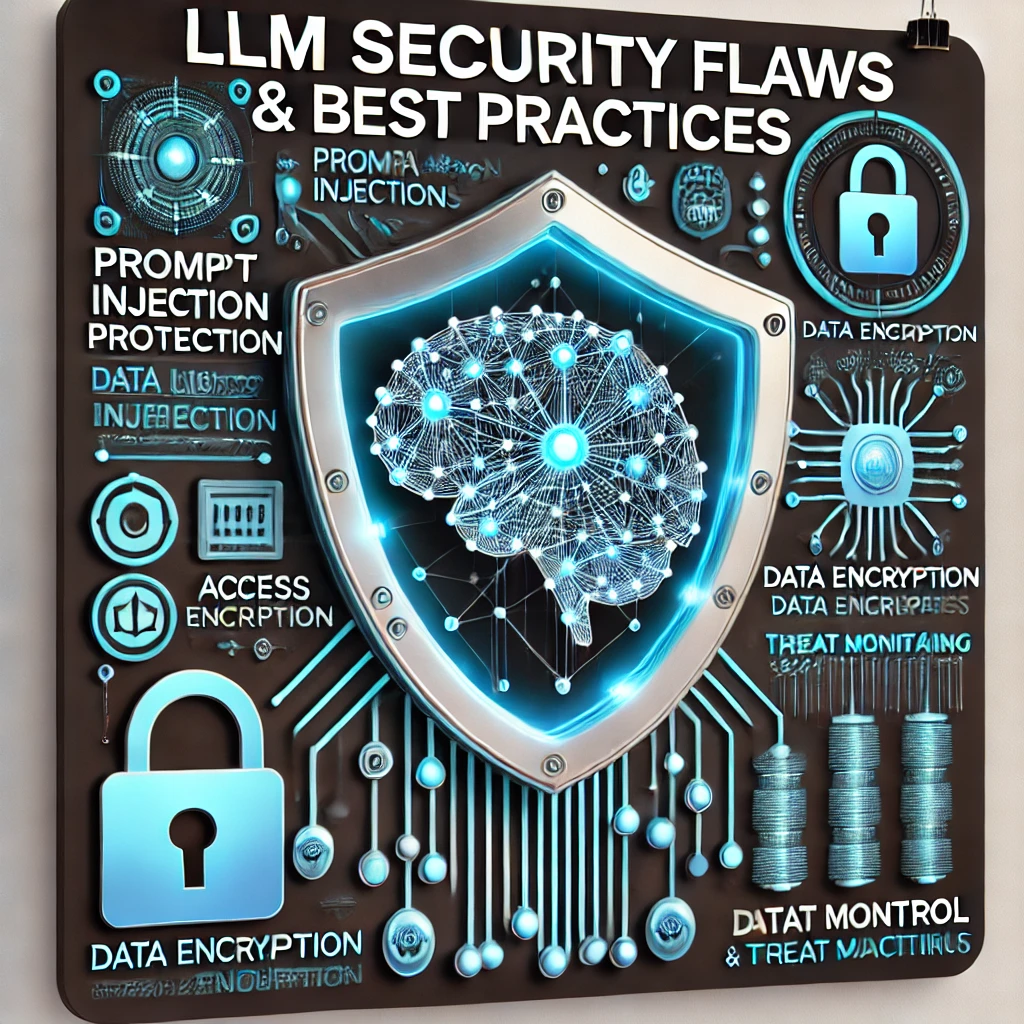Large Language Models (LLMs) have revolutionized artificial intelligence, offering unprecedented capabilities in natural language understanding and generation. However, these models also come with inherent architectural flaws that, if ignored, can lead to serious security risks. This article explores the major flaws in LLM architecture that should be addressed and provides best practices to ensure the security of these models in enterprise environments.
Major LLM Architecture Flaws to Avoid
1. Unfiltered Data Input (Prompt Injection Attacks)
LLMs are highly susceptible to adversarial inputs, where attackers craft prompts that manipulate model behavior.
- Ignored Consequence: Attackers can induce LLMs to generate harmful or misleading responses.
- Mitigation: Implement robust input sanitization, limit prompt capabilities, and use strict validation filters.
2. Insecure API Endpoints
APIs that provide access to LLMs are often exposed to unauthorized access.
- Ignored Consequence: If not properly secured, attackers can exploit endpoints to send malicious prompts or retrieve confidential data.
- Mitigation: Use strong authentication mechanisms, implement rate limiting, and ensure encrypted communication.
3. Overreliance on Training Data (Data Poisoning Attacks)
LLMs rely heavily on pre-trained datasets, which can be manipulated to introduce bias or malicious patterns.
- Ignored Consequence: The model can develop vulnerabilities that lead to unethical or biased outputs.
- Mitigation: Conduct rigorous dataset validation and implement continuous monitoring for data integrity.
4. Excessive Model Memorization
LLMs can memorize sensitive information from training data, making it susceptible to extraction attacks.
- Ignored Consequence: Confidential data like passwords, personal information, or proprietary business data can be leaked through model outputs.
- Mitigation: Implement differential privacy, limit model access, and continuously audit training data.
5. Lack of Access Control and User Privileges
Without strict access controls, unauthorized users may gain entry to sensitive model operations.
- Ignored Consequence: Exposure of critical functionalities can lead to model abuse and data breaches.
- Mitigation: Implement Role-Based Access Control (RBAC), enforce least privilege principles, and use Multi-Factor Authentication (MFA).
6. Model Bias and Ethical Risks
Pre-trained LLMs inherit biases from datasets, leading to unfair or discriminatory outputs.
- Ignored Consequence: Failure to address biases can result in reputational damage and regulatory non-compliance.
- Mitigation: Regularly audit model responses, use diverse training datasets, and apply bias correction techniques.
7. Lack of Explainability and Interpretability
LLMs operate as black-box models, making it difficult to interpret decisions.
- Ignored Consequence: Organizations face challenges in compliance and accountability when errors arise.
- Mitigation: Use explainable AI (XAI) techniques and maintain logs for decision audits.
Best Security Practices for LLMs
1. Implement Robust Authentication and Authorization
- Use OAuth 2.0 and API keys for secure authentication.
- Apply Role-Based Access Control (RBAC) to restrict model access.
- Enforce Multi-Factor Authentication (MFA) for high-privilege users.
2. Ensure Secure Data Handling and Encryption
- Encrypt all data at rest and in transit using AES-256 and TLS 1.3.
- Mask sensitive data in LLM interactions to prevent leakage.
- Regularly audit logs for suspicious data access patterns.
3. Adopt Adversarial Testing and Red Teaming
- Conduct penetration testing to identify vulnerabilities in model outputs.
- Implement adversarial attack simulations to measure model robustness.
- Use automated testing tools to detect prompt injection risks.
4. Apply Differential Privacy Techniques
- Use differential privacy methods to prevent sensitive data leakage.
- Train models with federated learning to minimize direct data exposure.
- Ensure compliance with GDPR, CCPA, and industry-specific regulations.
5. Monitor and Audit Model Activity
- Implement real-time monitoring for anomaly detection.
- Maintain audit logs for LLM interactions and analyze user patterns.
- Use AI-driven security analytics to detect misuse and threats.
6. Enhance Explainability and Bias Mitigation
- Incorporate interpretable AI techniques for transparency.
- Continuously evaluate LLM responses for fairness and ethical concerns.
- Regularly retrain models with diverse, unbiased datasets.
7. Limit Model Exposure and Deploy in Secure Environments
- Deploy LLMs in secure, isolated environments (e.g., containerized solutions like Docker).
- Limit external API access to trusted sources only.
- Enforce strict firewall rules and use zero-trust security models.
Conclusion
Securing Large Language Models (LLMs) requires a proactive approach to address architectural flaws while implementing robust security practices. By mitigating issues like prompt injection, data poisoning, excessive memorization, and insecure APIs, organizations can reduce the risk of LLM exploitation.
Adopting best practices such as strong authentication, adversarial testing, encryption, and continuous monitoring ensures that LLMs remain secure, compliant, and resilient against evolving threats. A well-protected LLM architecture not only safeguards sensitive data but also fosters trust in AI-driven enterprise solutions.
